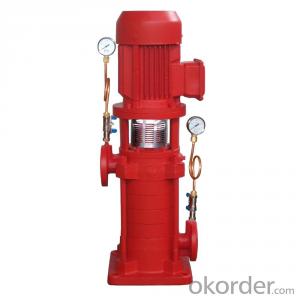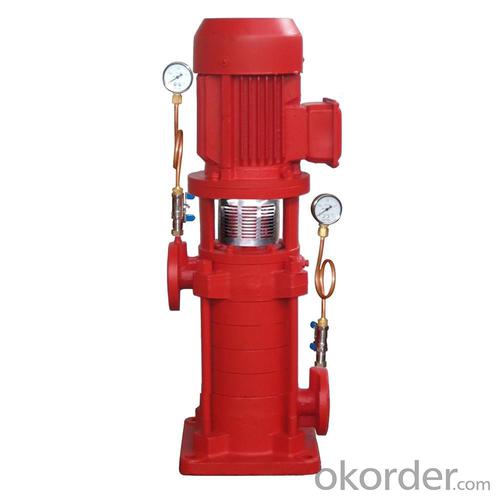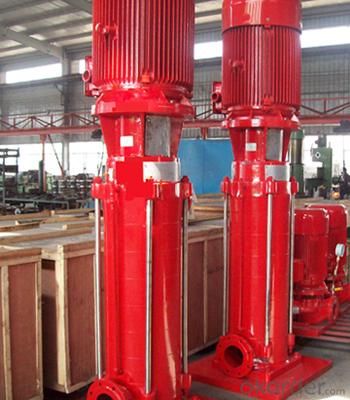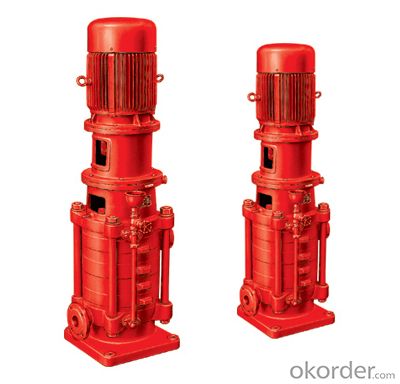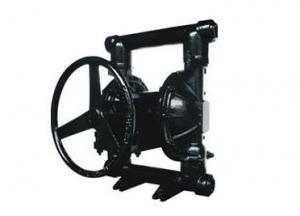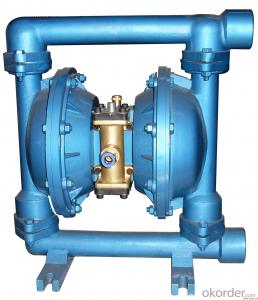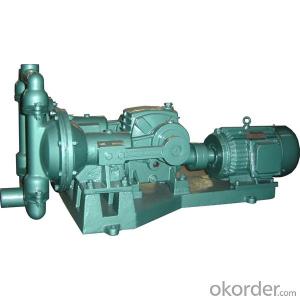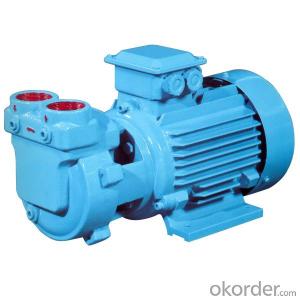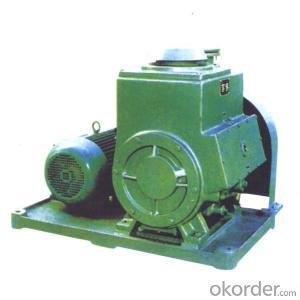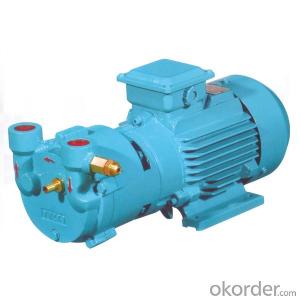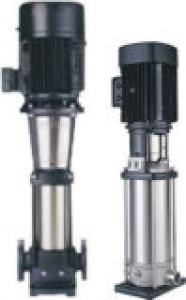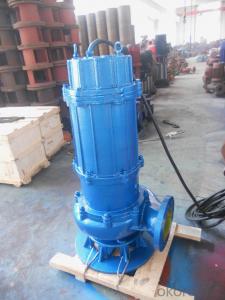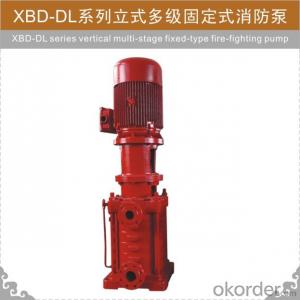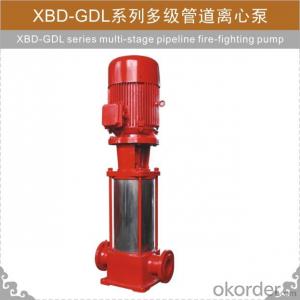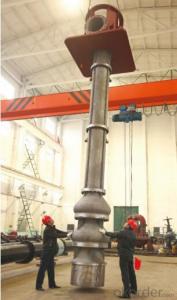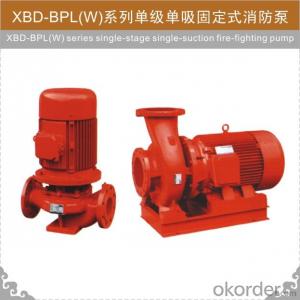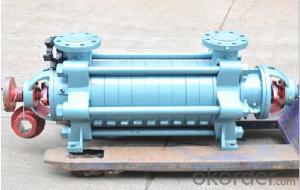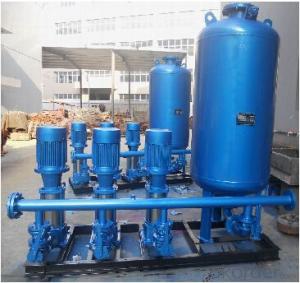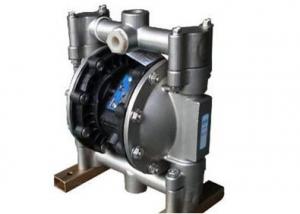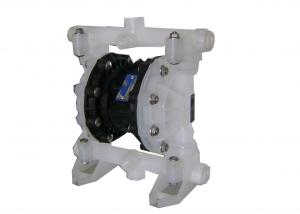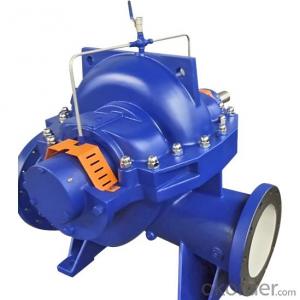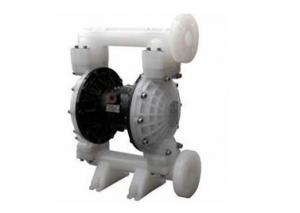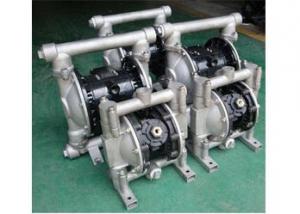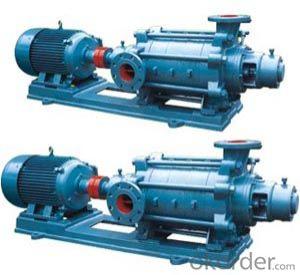XBD-DL Electrical Water Pump in Fire Pump System
- Loading Port:
- Shanghai
- Payment Terms:
- TT OR LC
- Min Order Qty:
- 1 unit
- Supply Capability:
- 500 unit/month
OKorder Service Pledge
OKorder Financial Service
You Might Also Like
XBD-DL Electrical Water Pump in Fire Pump System
Product Overview of XBD-DL Electrical Water Pump in Fire Pump System
XBD series fixed fire pump are late-model products developed strictly in accordance with the latest-issued GB6245-2006 Performance Requirements and Testing Methods for Fire Pumps responding to the actual and special needs in market. XBD series fixed fire pumps are tested by National Quality Supervision & Test Center for Fire Fighting Equipment. They are conforming to or even higher than the standard in respect of performance index.
XBD series are provided with four structural types to meet the different requirements of users, including vertical single-stage, vertical multistage, horizontal single-stage and horizontal multistage.
Applications of XBD-DL Electrical Water Pump in Fire Pump System
XBD series fire pumps are mainly used in the hydrant and automatic spray extinguishing systems etc. in the fixed fire fighting system in enterprises,institutions,project construction,high building etc,to deliver clean water and medium similar to water in physiochemical property,not containing solid grain and of temperature below 100°C. They are also used in the common water supply system for fire control, life and production, and water supply and drainage in constructions and municipal projects etc.
Parameters of XBD-DL Electrical Water Pump in Fire Pump System
•Flow range: 1~200L/s
•Pressure range: 0.2~2.25MPa
•Motor power range: 1.5~200kW
•Inlet/outlet diamater: DN50~DN200mm
FAQ
Q: Do you have self-priming pumps?
A: Yes, our product portfolio also includes two ranges of self-priming pumps: self-priming electric pumps and self-priming side channel pumps.
Q: Is it really necessary to fit a bleed valve for the boxes?
A: It is always best to have a bleed valve as the gas produced by the fermenting sewage is potentially hazardous.
Q: If I increase the power of the motor, must I also increase the power of the inverter?
A: You must select the size of converter that allows maximum absorption of the electric motor.
Q: Do you have pumps with grinders?
A: Yes, the WQ models.
Q: How long is your warranty?
A: Unless otherwise expressly authorized in writing, by specifying a longer period or different conditions, CNBM states that, for a period of twelve (12) months from delivery date, all Products supplied are free from defects in materials and workmanship, and conform to the applicable specifications. Either the delivery documentation or the invoice must be provided to prove delivery date. In absence of such documents, the production date appearing on the product label may suffice.
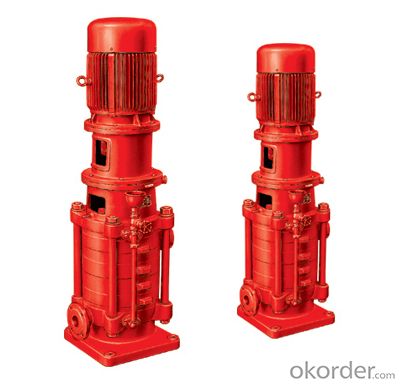
- Q: What are the safety certifications or standards for air pumps?
- There are several safety certifications and standards for air pumps, including the CE Mark, UL certification, and CSA certification. These certifications ensure that the air pumps meet specific safety and performance requirements, such as electrical safety, material safety, and quality control. Compliance with these certifications demonstrates that the air pumps have undergone rigorous testing and meet the necessary standards for safe operation.
- Q: What are the common applications of an air pump?
- Air pumps have a wide range of applications in various industries and everyday life. One of the most common applications is in inflating tires, whether it be for bicycles, cars, or other vehicles. Air pumps are also used in sports equipment, such as basketballs, soccer balls, and volleyballs, as well as inflatable toys and air mattresses. In the medical field, air pumps are essential for oxygen therapy, where they deliver a continuous flow of air or oxygen to patients who require respiratory support. These pumps are also used in medical devices like nebulizers, which convert liquid medication into a fine mist for inhalation. Aquariums and fish tanks often utilize air pumps to provide oxygen for the fish, promote water circulation, and power various filtration systems. They are also employed in hydroponics systems to deliver oxygen to the plant roots and ensure proper nutrient absorption. Another important application is in wastewater treatment plants, where air pumps are used to aerate water, facilitating the breakdown of organic matter by bacteria. This helps in the removal of pollutants and the maintenance of a healthy ecosystem. Additionally, air pumps are employed in industrial processes that require compressed air, such as pneumatic tools and machinery. They are also utilized in HVAC systems for air conditioning, ventilation, and heating. Overall, the common applications of air pumps span across a wide range of industries, including automotive, sports, medical, aquatics, agriculture, and manufacturing, making them an essential component in various aspects of our daily lives.
- Q: Can an air pump be used for inflating air mattresses with built-in massage features?
- Certainly! An air pump is capable of inflating air mattresses that have built-in massage features. Air mattresses equipped with built-in massage features typically possess valves or openings that can be connected to an air pump. By connecting the air pump to the mattress, you can effortlessly inflate it to your desired level of firmness. Nevertheless, it is crucial to verify that the air pump you are using is compatible with the valve or opening of the mattress. Certain air pumps are accompanied by various nozzle attachments to accommodate different types of valves, so it is advisable to review the specifications and instructions provided by both the manufacturer of the air mattress and the air pump to ensure proper compatibility.
- Q: Can an air pump be used for inflatable sports arenas?
- Indeed, inflatable sports arenas can make use of an air pump. To maintain their inflated state, these arenas heavily depend on a constant flow of air. An air pump can effectively supply the required air pressure, thereby upholding the structure's form and stability. It is crucial to choose an air pump that possesses ample power to generate the necessary air pressure for arena inflation. Additionally, the pump should be equipped with a suitable nozzle or attachment to fit the arena's inflation valves. By ensuring compatibility between the air pump and the specific requirements of the inflatable sports arena, proper inflation and safe usage can be guaranteed.
- Q: 380V air compressor (air pump) connected to the pressure switch and AC contactor, how to connect the two thin wire?
- The two thin line is the pressure switch, the input and output lines are strung into the coil circuit of the AC contactor.Wiring method:The pressure switch is connected with the power supply L1, the pressure switch is output, and the contactor coil A1 is connected.Contactor coil A2 power supply L2.The wiring is completed to check whether the terminals are firm and reliable, and the power supply should be disconnected before the connection, so as to prevent electric shock.
- Q: Can an air pump be used for inflatable event backdrops?
- Absolutely, an air pump is perfectly suitable for inflating event backdrops made of inflatable materials. In reality, utilizing an air pump is the most prevalent and efficient approach when it comes to filling up large inflatable structures such as event backdrops. These pumps are purposely engineered to deliver a substantial amount of air rapidly, enabling effortless and prompt inflation of the backdrop. Moreover, they typically include a variety of nozzle attachments that can accommodate different types of inflatables, including event backdrops. Hence, regardless of whether you are arranging a wedding, corporate event, or any other special occasion, an air pump serves as a dependable and practical tool for swiftly inflating your event backdrop and producing a breathtaking visual impact.
- Q: Are air pumps suitable for inflating air mattresses?
- Yes, air pumps are suitable for inflating air mattresses. Air pumps are specifically designed to provide a convenient and efficient way to inflate air mattresses. They come in various types such as electric pumps, foot pumps, and battery-operated pumps. Electric pumps are the most popular choice as they are quick and easy to use. They typically come with different nozzle attachments to fit the air mattress valve and can inflate the mattress in a matter of minutes. Foot pumps are also a good option, especially for outdoor use or when electricity is not available. They require manual effort but are still effective in inflating air mattresses. Overall, air pumps are a reliable and practical tool for inflating air mattresses, saving time and effort compared to manual inflation methods.
- Q: Can an air pump be used for inflating inflatable pools with multiple chambers?
- Certainly, an air pump is capable of inflating inflatable pools that have multiple chambers. In reality, utilizing an air pump can significantly expedite and simplify the inflation procedure in contrast to manually blowing up each chamber. Air pumps are engineered to deliver a constant flow of air, making them perfect for simultaneously inflating numerous chambers. Furthermore, certain air pumps are even equipped with diverse nozzle attachments that can accommodate different valve sizes, guaranteeing a secure and efficient inflation process. All in all, it is highly advisable to employ an air pump when inflating inflatable pools that feature multiple chambers.
- Q: Can an air pump be used for inflating swimming pool toys?
- Yes, an air pump can be used for inflating swimming pool toys. Air pumps are designed to inflate various types of inflatables, including swimming pool toys. They typically come with different nozzle attachments that can fit the valves on pool toys. By attaching the appropriate nozzle to the pump and connecting it to the valve on the toy, you can easily inflate the toy using the air pump. It is important to ensure that the pump has enough power and airflow capacity to properly inflate the toy without causing any damage.
- Q: Found in just half an hour after the blackout, after the call, the circulating water pump, pump not out, thanks to the power of the time is short, or really do not know what will happen, I pump in low cabinet, a power outage, the water pump to pump down gas pipes, the cabinet in the end the brothers, a good way, how can the pump placed above the tank, to solve the problem of water pump, I don't want to put a lid on the pump cylinder, affect the appearance, the two is too much noise
- Go to the hardware store to buy a one-way through the check valve, so there is no problem but it needs to be modified, you do not know is that a problem is: if the water is from the pump connecting pipe back then (if it is at the bottom of the water outlet of the water pump, then filtered) to be higher than the tank water level. Two: fish tank water too much, too much water after the blackout full bottom filter it, usually change the water is not open to water filtration, cylinder full reflux down to the bottom of the filter, filter at the bottom of the water just enough water on it, then there are a lot of space at the bottom of filter loaded stop after power flow the water, until the water does not flow back to the bottom of the filter is also not full.
Send your message to us
XBD-DL Electrical Water Pump in Fire Pump System
- Loading Port:
- Shanghai
- Payment Terms:
- TT OR LC
- Min Order Qty:
- 1 unit
- Supply Capability:
- 500 unit/month
OKorder Service Pledge
OKorder Financial Service
Similar products
Hot products
Hot Searches
Related keywords
